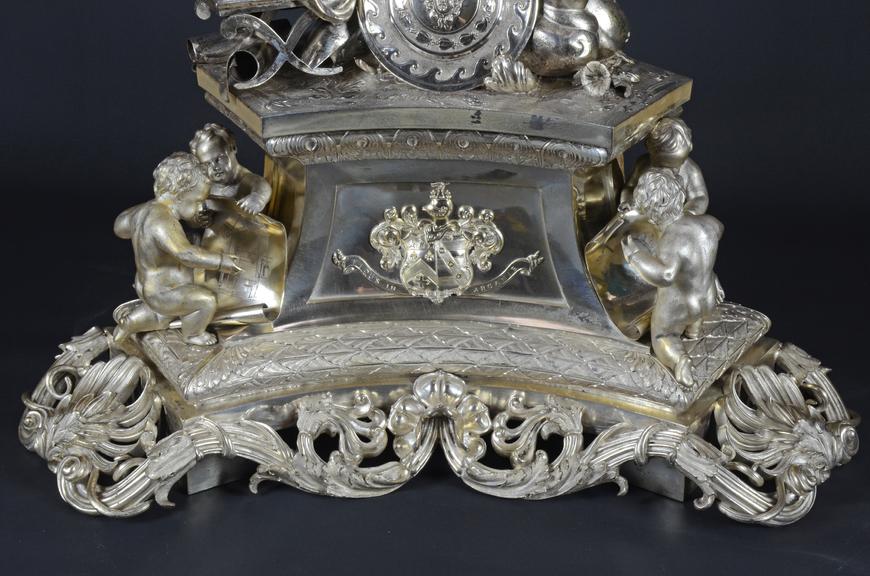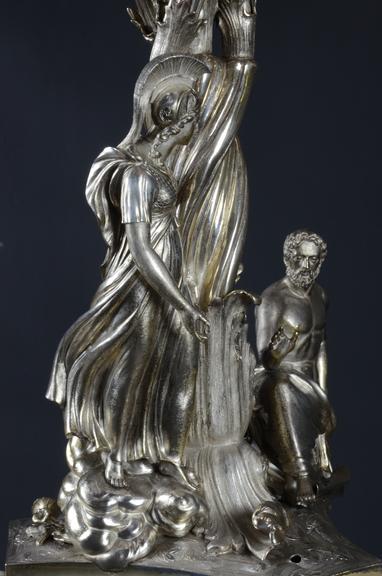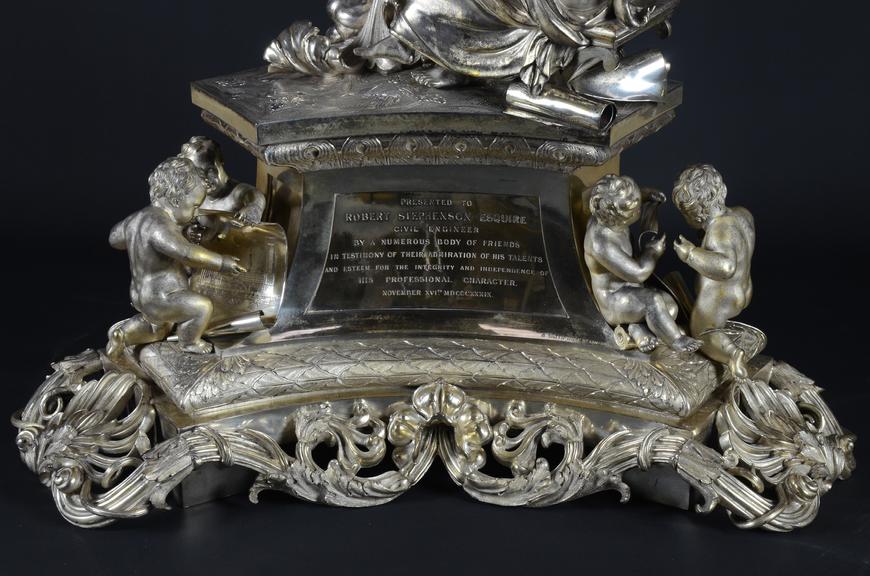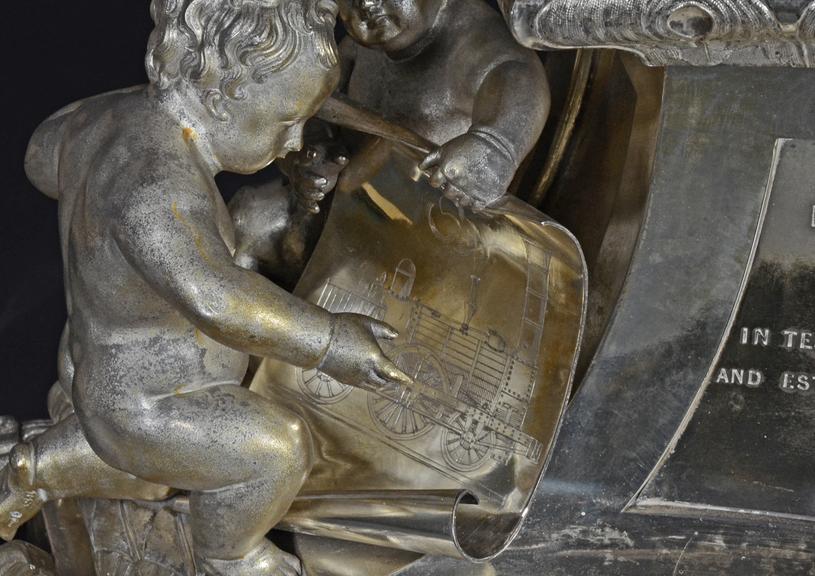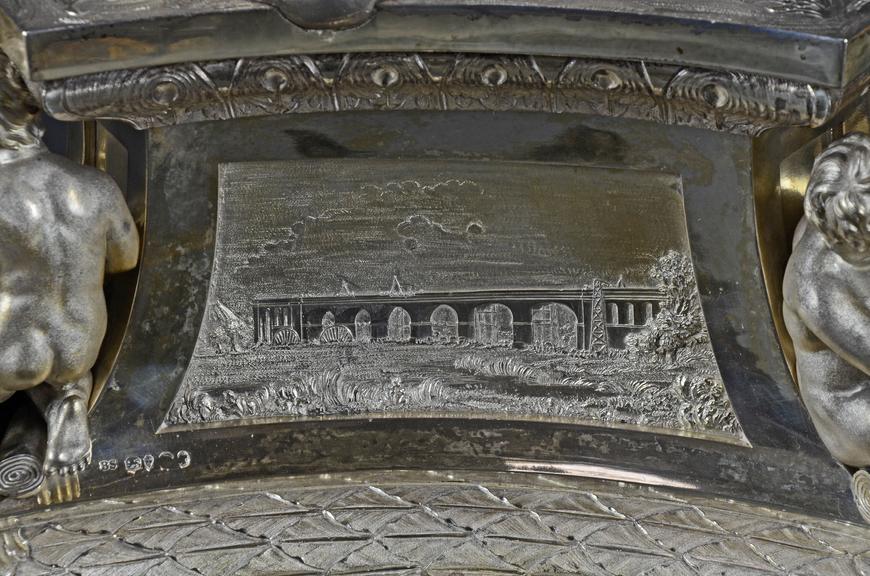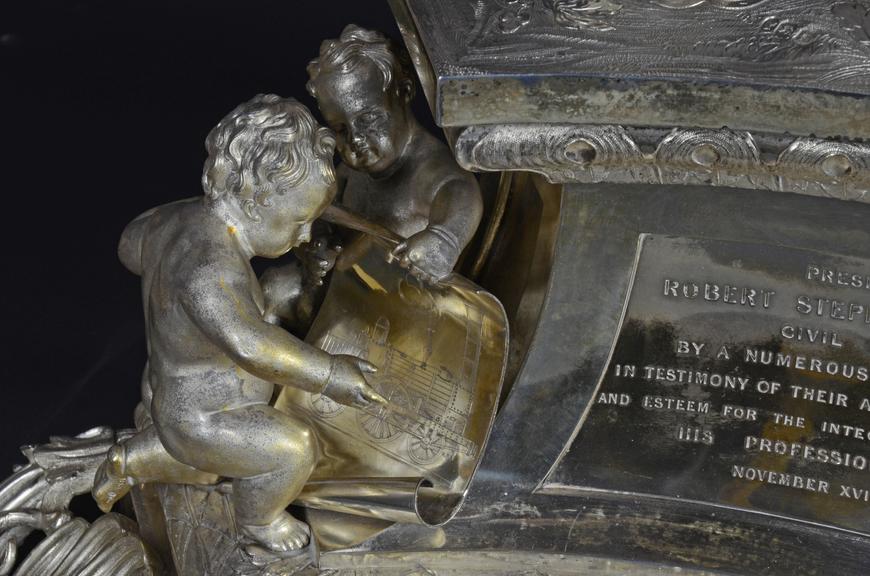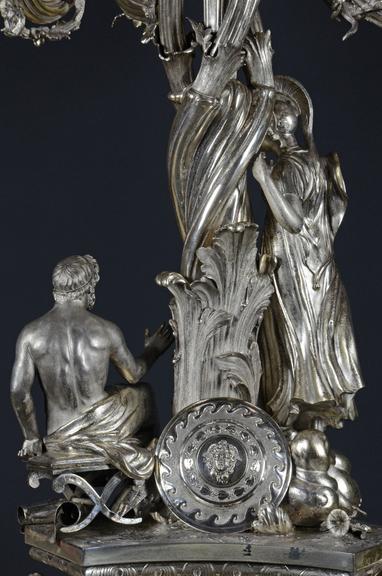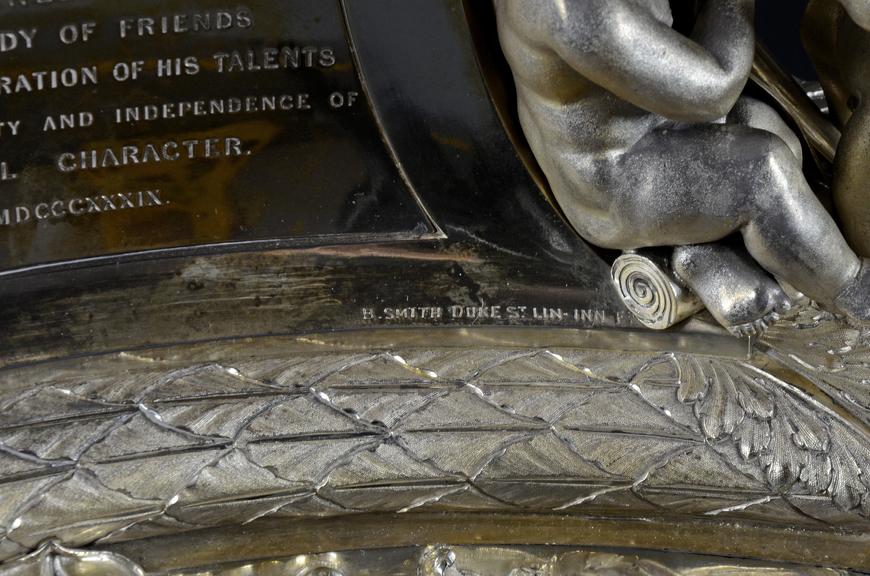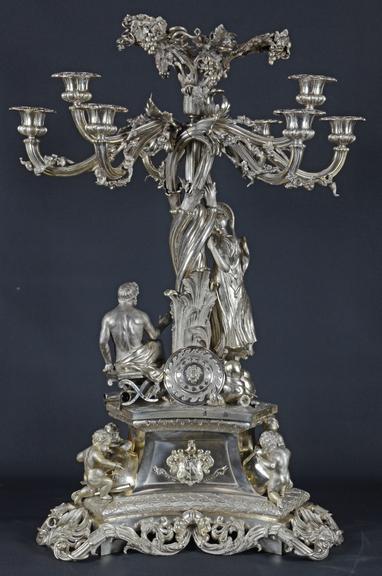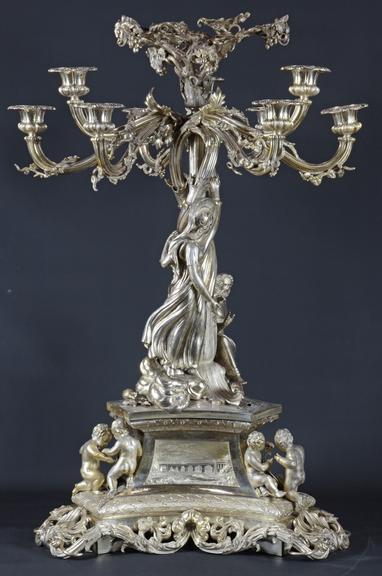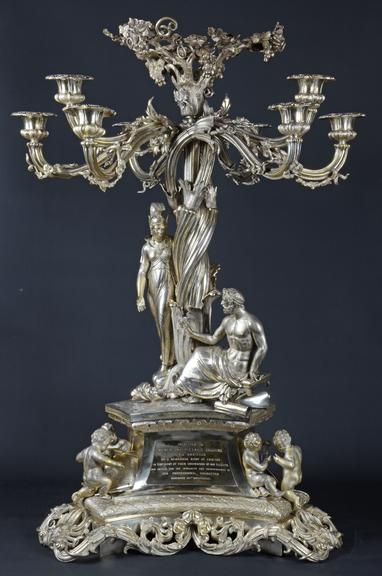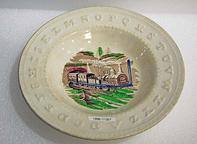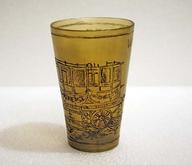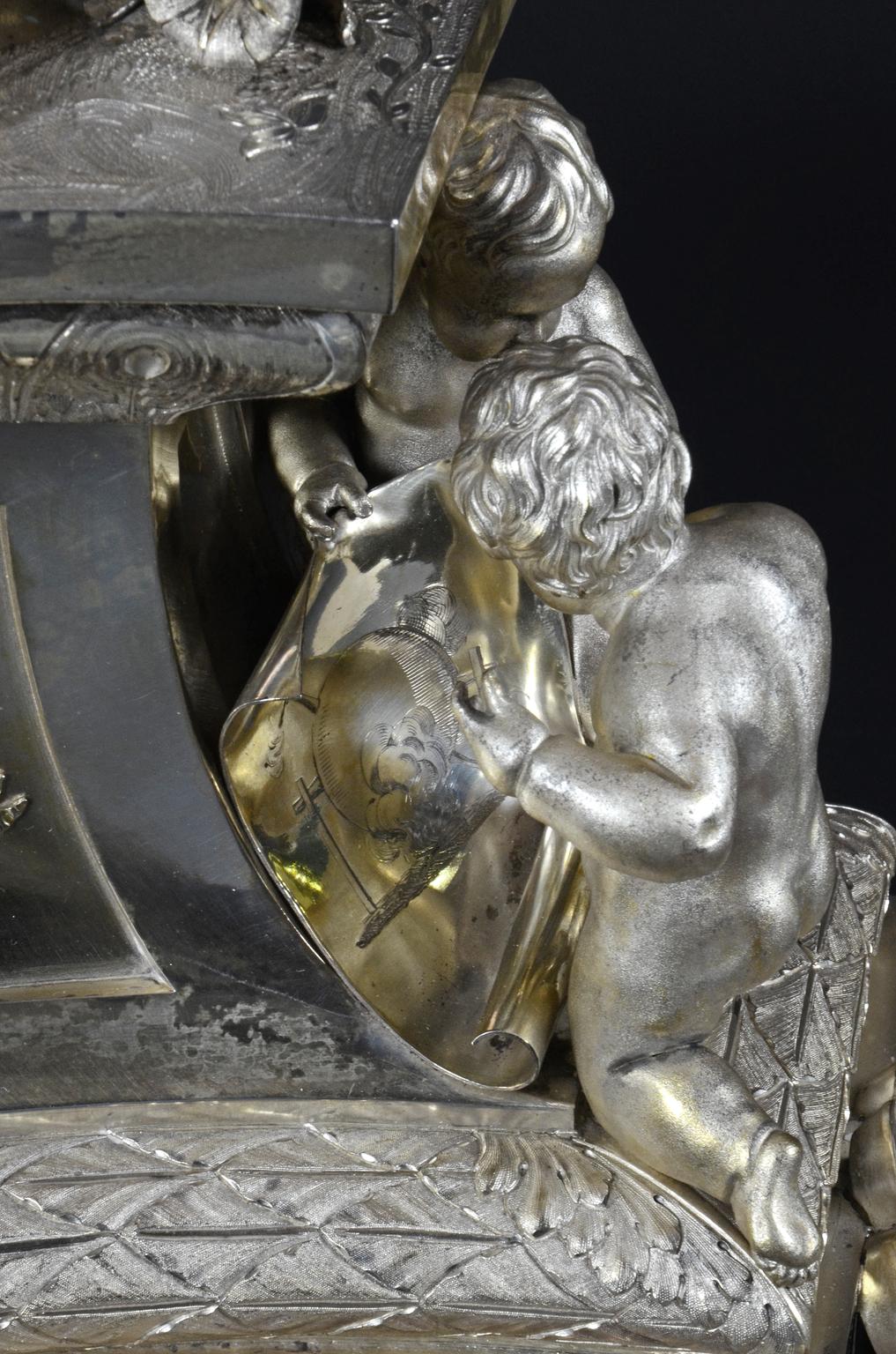
Epergne presented to Robert Stephenson
Epergne, silver, designed and manufactured by Mr B Smith of Duke Steet, Lincoln's Inn Fields, London, presented to Robert Stephenson, 16th November 1839.
This epergne, a table centrepiece which varyingly held flowers or candles, was presented to Robert Stephenson by friends as a gift to recognise his many achievements. The inscription reads:
“Presented to Robert Stephenson Esquire, Civil Engineer, by a numerous body of friends in testimony of their admiration of his talents and esteem for the integrity and independence of his professional character. November XVIth MDCCCXXXIX”
The dramatic centrepiece features imagery reflecting Stephenson’s work and places him among historical and mythological figures which, coupled with the grandeur of the epergne, makes this an impressive gift.
At the base, cherubs examine drawings which depict critical inventions in the history and development of steam power. Hero’s aeolipile, a radial steam turbine described by and sometimes attributed to Hero of Alexandria; a beam engine; and a 2-2-2 Patentee locomotive built by Robert Stephenson & Company, are all engraved onto silver scrolls.
The Stephenson coat of arms adorns another of the aspects, with the Latin “FIDUS IN ARCANIS” meaning “faithful in secret affairs”. A hand rises from the top of a helmet, perhaps symbolising the power of learning and ingenuity over military might. The crest itself appears to be an amalgamation of various motifs associated with the Stephenson name, the helmet alternately appearing with a sheaf of wheat in other depictions.
On the third side is an engraving which depicts a drawing of the Wolverton viaduct by J. C. Bourne. Bourne was a lithographer who had published a collection of illustrations showing the construction of the London & Birmingham Railway; Robert Stephenson had been appointed the line’s Chief Engineer in 1833.
The figure of Athena (Minerva) stands upon a cloud of steam and in an attitude which suggests she is extolling the virtues of steam power to her companion. This male figure’s identity is unclear. It could be Apollo, the Sun-god who was also associated with knowledge and intellect. Another possibility is Hero of Alexandria – his aeolipile (a simple steam turbine that Hero had described in the first century CE) features elsewhere on the epergne. The figure’s seated position seems to suggest Hephaestus (Vulcan), the god of metallurgy, industry, and blacksmiths, who was often depicted in this way.
Although Stephenson was presented with this striking centrepiece on 16th November, the date that he believed throughout his life was his birthday, he had actually been born on 16th October 1803.





















